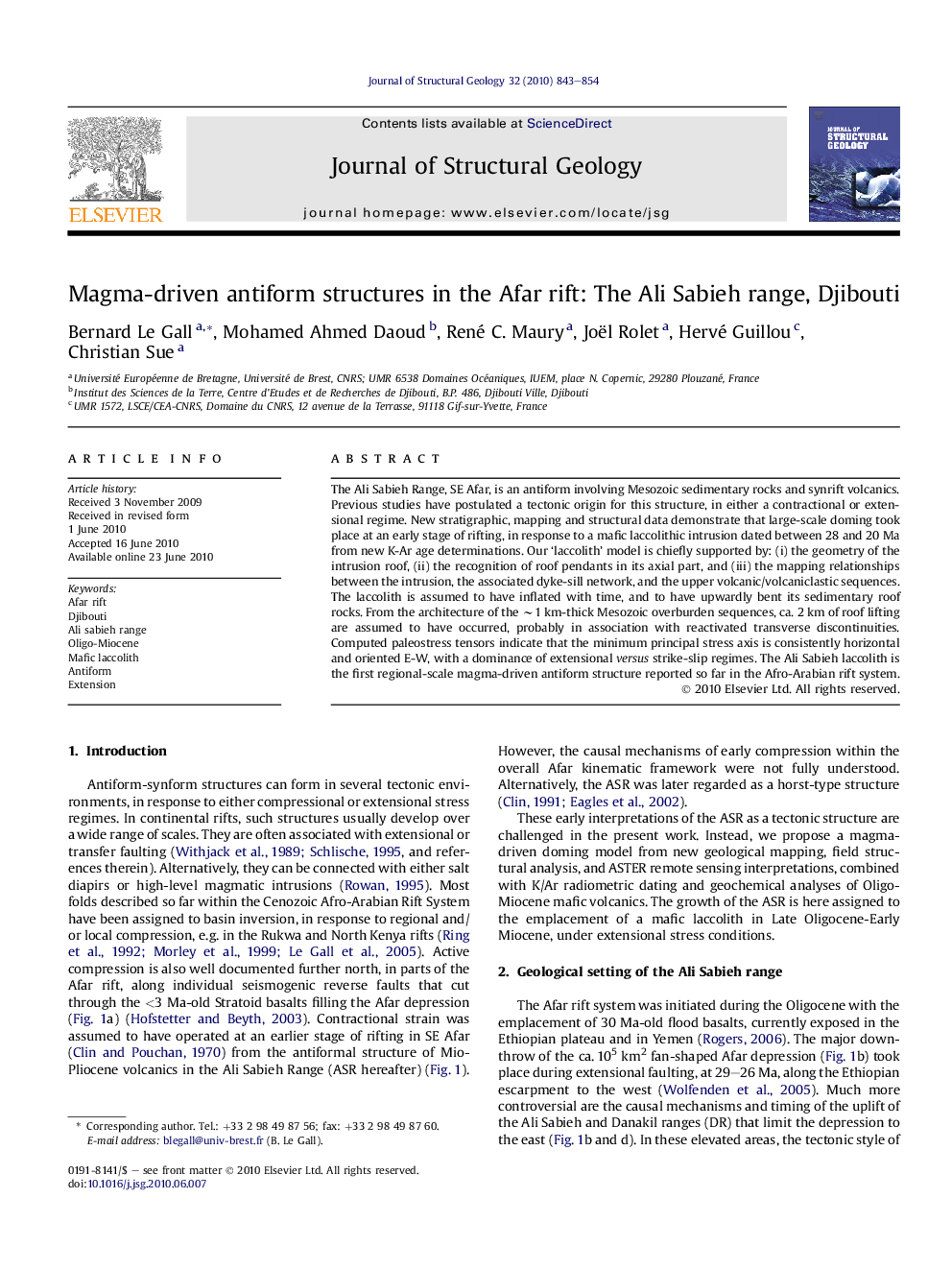| Article ID | Journal | Published Year | Pages | File Type |
|---|---|---|---|---|
| 4733345 | Journal of Structural Geology | 2010 | 12 Pages |
The Ali Sabieh Range, SE Afar, is an antiform involving Mesozoic sedimentary rocks and synrift volcanics. Previous studies have postulated a tectonic origin for this structure, in either a contractional or extensional regime. New stratigraphic, mapping and structural data demonstrate that large-scale doming took place at an early stage of rifting, in response to a mafic laccolithic intrusion dated between 28 and 20 Ma from new K-Ar age determinations. Our ‘laccolith’ model is chiefly supported by: (i) the geometry of the intrusion roof, (ii) the recognition of roof pendants in its axial part, and (iii) the mapping relationships between the intrusion, the associated dyke-sill network, and the upper volcanic/volcaniclastic sequences. The laccolith is assumed to have inflated with time, and to have upwardly bent its sedimentary roof rocks. From the architecture of the ∼1 km-thick Mesozoic overburden sequences, ca. 2 km of roof lifting are assumed to have occurred, probably in association with reactivated transverse discontinuities. Computed paleostress tensors indicate that the minimum principal stress axis is consistently horizontal and oriented E-W, with a dominance of extensional versus strike-slip regimes. The Ali Sabieh laccolith is the first regional-scale magma-driven antiform structure reported so far in the Afro-Arabian rift system.
